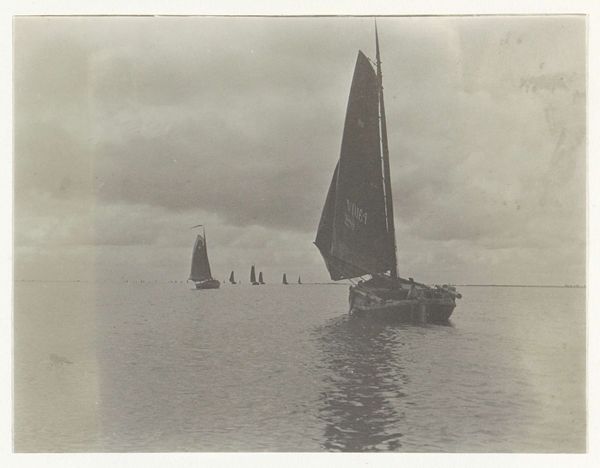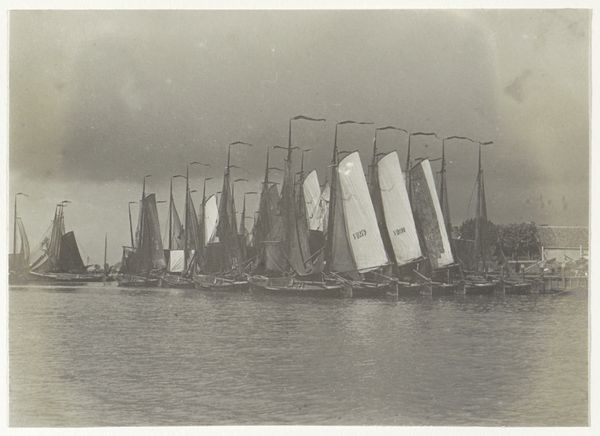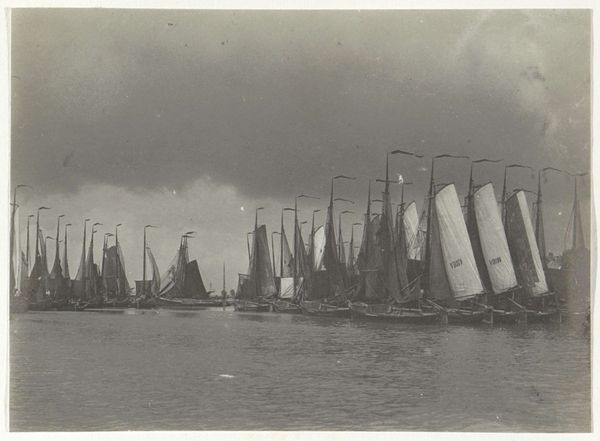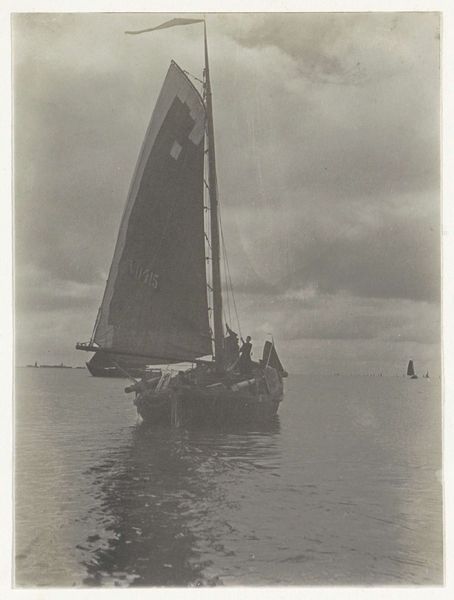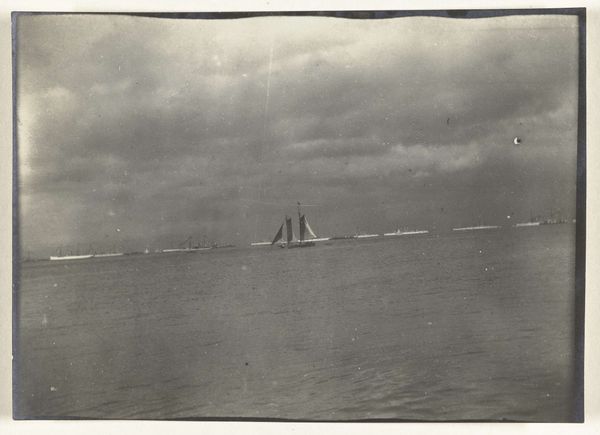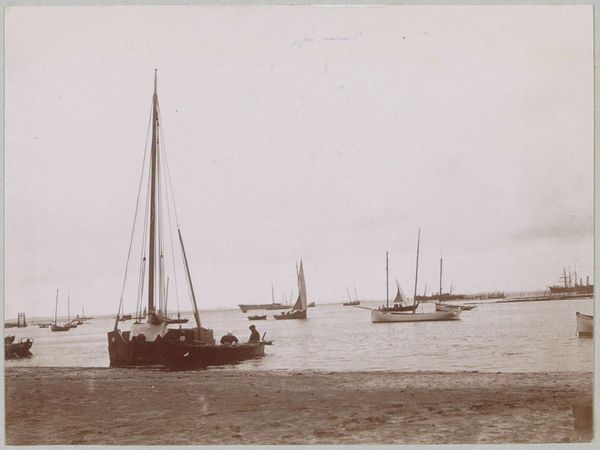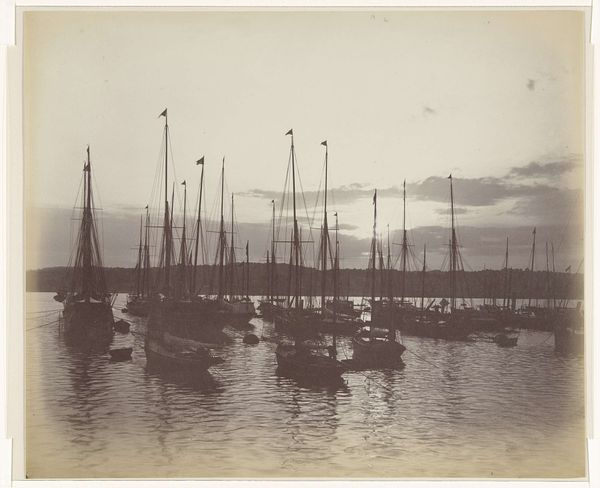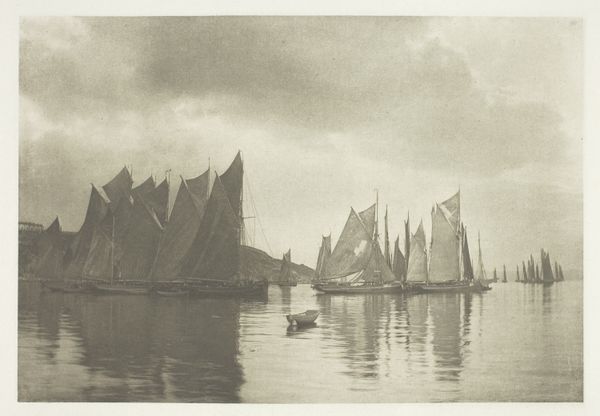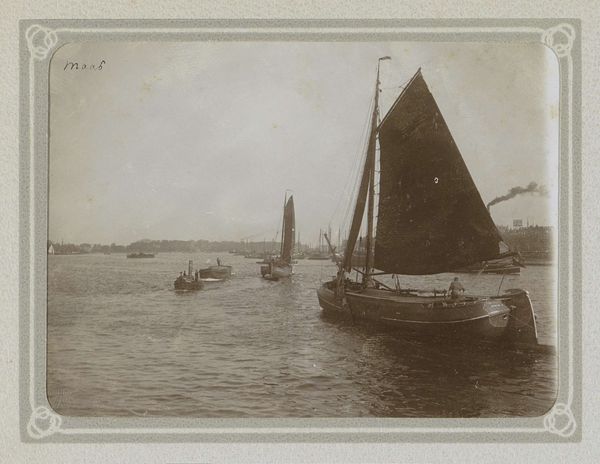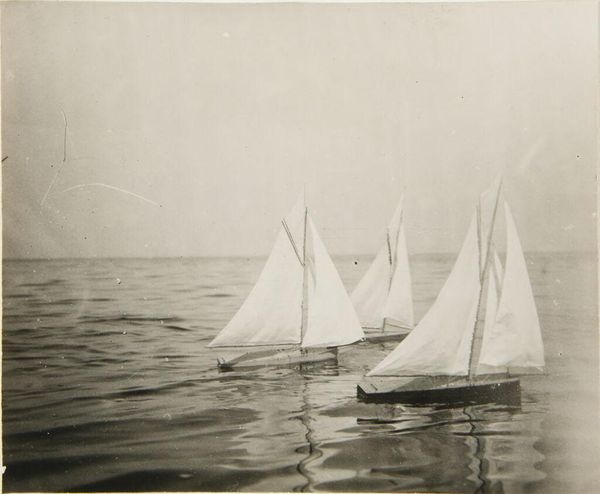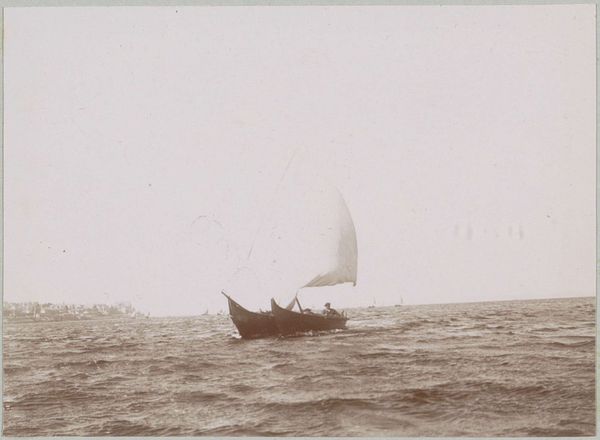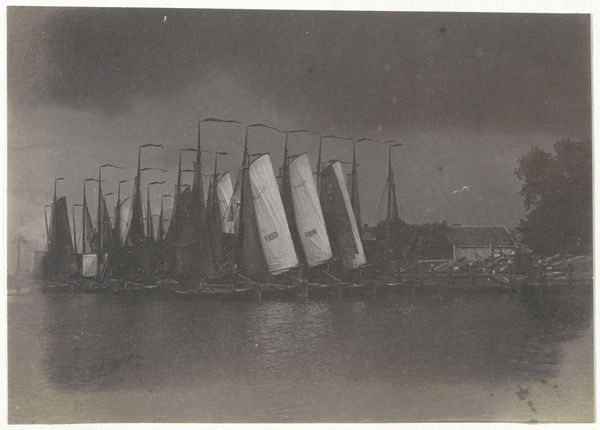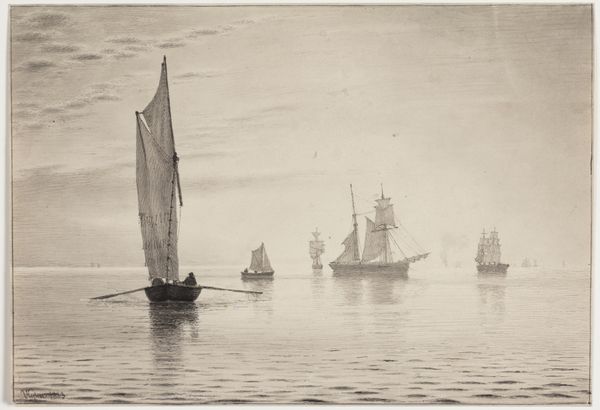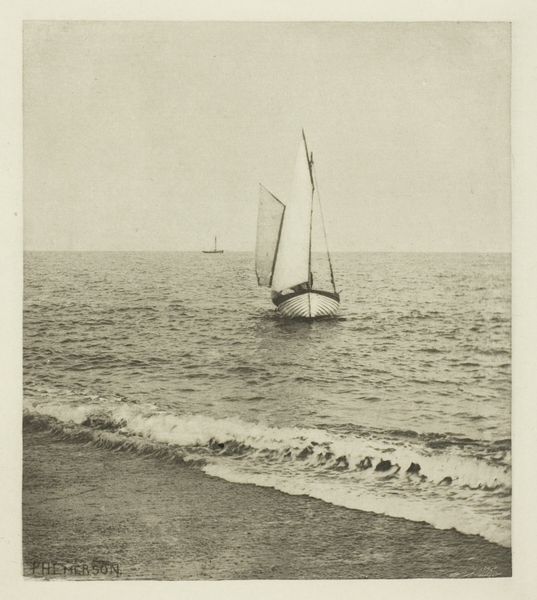
#
excavation photography
#
countryside
#
nature
#
outdoor photography
#
outdoor loving
#
outdoor scenery
#
nature friendly
#
nature heavy
#
outdoor activity
#
sea
#
shadow overcast
Dimensions: height 72 mm, width 93 mm
Copyright: Rijks Museum: Open Domain
Curator: The atmosphere in this photographic print feels rather somber, don’t you think? A grey sky hangs heavy over the water. Editor: Indeed. The silver gelatin print, known as "Vissersschepen op de Zuiderzee" or "Fishing Boats on the Zuiderzee", made sometime between 1900 and 1910, presents a fascinating glimpse into early photographic practices. Observe how tonal range conveys a certain starkness in the scene. Curator: What intrigues me is the overall composition, though. The sparseness, in terms of texture and subject matter, heightens the emotional effect. You have this single prominent sailboat taking precedence in the immediate foreground with several others seemingly floating at the distant horizon line, which gives the photographic print an overall sense of spatial tension. Editor: Precisely. Zuiderzee—now known as the IJsselmeer since the construction of the Afsluitdijk dam—was a crucial waterway, central to fishing economies during the early twentieth century. These boats symbolize a lifestyle and its eventual alteration through human intervention and industrial change. They weren't just boats but representative of economic livelihoods. Curator: But if you observe the photographic textures—the water is only slightly rippled by faint linear vectors; the boat’s sail cloth billows slightly—these create compositional moments of counterpoint to the otherwise stoic, structured subject matter. Editor: A counterpoint reflecting societal shifts, perhaps. The formal constraints of black and white imagery emphasize shapes and arrangements over vibrant representation; such photographic constraints offer access into decoding cultural themes relating to man’s interactions with the natural world and with machines. Curator: One can sense, perhaps, an artist playing with form in response to external transformation. What is captured then goes beyond documenting ships. It portrays the symbolic weight vessels have and once had. Editor: It captures them poised in their era. The technology is used in its early stages and creates its own aesthetic meaning when coupled with symbolic representation. A moment where art both meets the zeitgeist and reflects a timeless pursuit for balance with forces of industry and nature, no? Curator: An exceptionally rich, historical visual poem. Editor: Quite a fitting synthesis indeed.
Comments
No comments
Be the first to comment and join the conversation on the ultimate creative platform.
